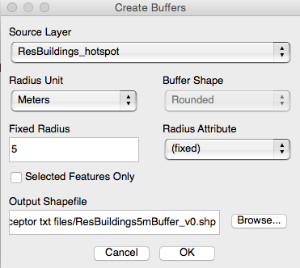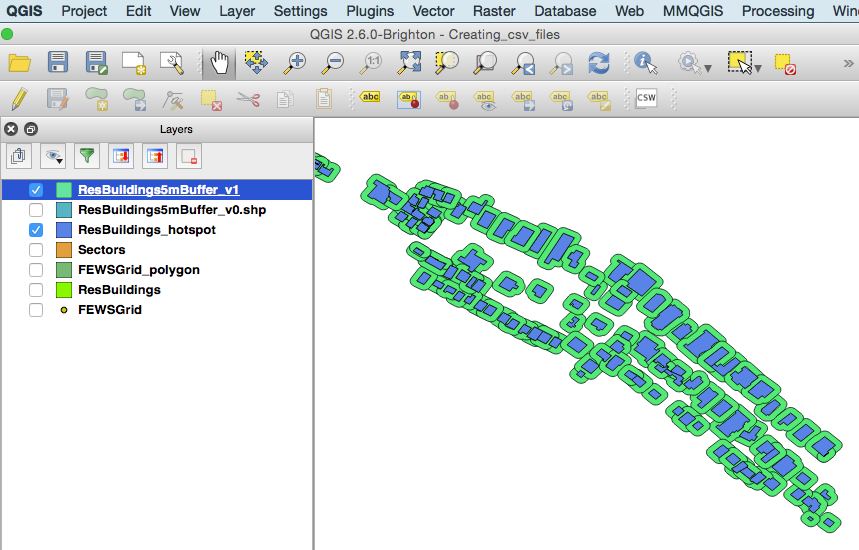This document describes an approach to create <receptor>.txt files of so-called latent receptors for RISC-kit's Bayesian network based decision support system. Latent receptors are not real physical entities, but small areas whose hazard values are of interest, e.g. erosion in buffer zones around houses. In computations the BN adaptor treats the latent receptors just as real receptors, however they are not explicitly represented as such in the BN.
The approach is very similar to Tutorial: Creating a <receptor>.txt file, but comprises two intermediate steps.
Prerequisites
- Shape layers of the sub-areas and the receptors as well as a FEWSGrid.txt (see Tutorial: Creating a <receptor>.txt file)
- The MMQGIS plugin (by http://michaelminn.com/linux/mmqgis/) needs to be installed (Plugins -> Manage and Install Plugins)
Step - by - step QGIS tutorial
- Follow steps 1 - 7 of Tutorial: Creating a <receptor>.txt file
- Create a buffer (e.g. 5m) around each receptor (MMQGIS -> Create -> Create Buffers)
- Subtract the original receptor polygons from the new buffer layer to obtain rings around the receptor (Vector -> Geoprocessing Tools -> Difference). The resulting layer contains (potentially overlapping) buffer rings, each associated with their unique receptorID and areaID of the receptor it originates from. (Step 2 and 3 can be repeated to obtain additional buffer rings, e.g. one with 5m - 10m distance from the receptor)
- Use this layer to proceed with steps 7 - 9 of Tutorial: Creating a <receptor>.txt file. Note that the filename needs to correspond to the second part of the ID of an Hnode, e.g. a file ResBuildings5mBuffer.txt links to a Hnode whose ID ends with "_ResBuildings5mBuffer". In contrast to "real" receptors, the filename does not correspond to an Rnode ID, because latent receptors do not have their own Rnodes, but make use of the Rnode of the corresponding "real" receptor.

